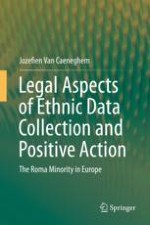2019 | OriginalPaper | Buchkapitel
7. International Framework on Positive Action
verfasst von : Jozefien Van Caeneghem
Erschienen in: Legal Aspects of Ethnic Data Collection and Positive Action
Aktivieren Sie unsere intelligente Suche, um passende Fachinhalte oder Patente zu finden.
Wählen Sie Textabschnitte aus um mit Künstlicher Intelligenz passenden Patente zu finden. powered by
Markieren Sie Textabschnitte, um KI-gestützt weitere passende Inhalte zu finden. powered by
